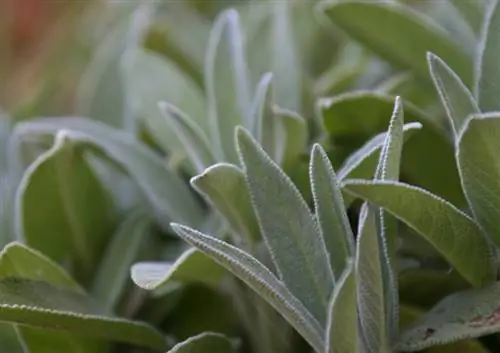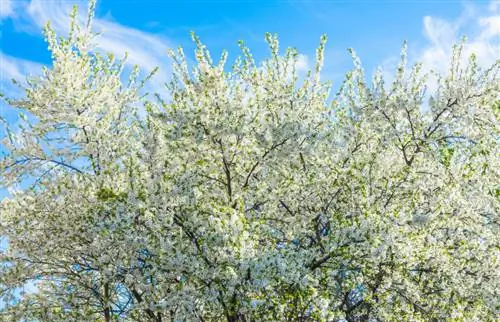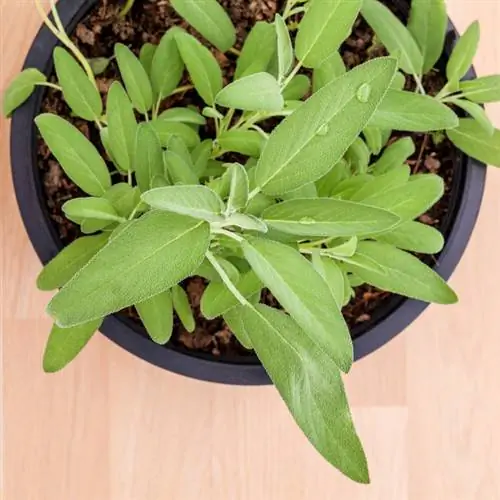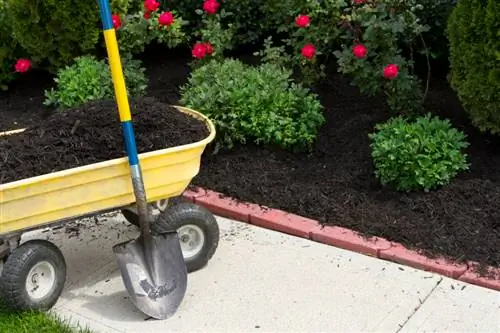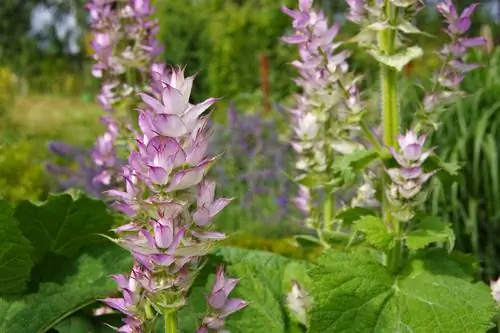- Author admin [email protected].
- Public 2023-12-16 16:46.
- Last modified 2025-01-23 11:20.
In order for sage to thrive and at the same time build up a high content of essential oils in the leaves, correct fertilization plays a central role. We looked over the shoulders of the professionals and modified the findings for the hobby garden.
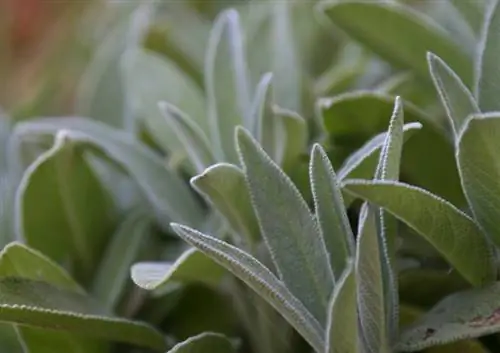
How can I fertilize sage naturally?
To fertilize sage ecologically, you can use compost and horn shavings every two weeks from March, apply nettle manure directly to the root area and add comfrey manure from July. Sage in the pot receives organic liquid fertilizer or fertilizer sticks.
Fertilize sage in harmony with nature - this is how it works
Nitrogen optimizes the aroma and potassium strengthens frost resistance, while phosphorus has a beneficial effect on flower and seed growth. Based on these findings, commercial farmers fertilize their sage fields. Since mineral fertilizers are not allowed in environmentally and he alth-conscious home gardens, the following modification is suitable for the organic-biological nutrient supply:
- From March, fertilize sage every 2 weeks with compost and nitrogen-containing horn shavings
- Additionally apply nettle manure directly to the root area
- In July and August combine compost with potassium-rich comfrey manure
- Fertilize sage in the pot with organic liquid fertilizer (€9.00 on Amazon) or fertilizer sticks
- Stop giving fertilizer from the end of August
If you are aiming to harvest the seeds as seed for the next year, it is advisable to change your fertilization schedule once buds begin to form. Nitrogen-rich fertilizers, such as nettle manure, are exchanged for nutrients rich in phosphorus. These include poultry manure or guano, the natural fertilizer made from the excrement of South American seabirds.
Make your own plant manure
The ecologically oriented hobby gardener always has a supply of the most important plant nutrients to hand during the growing season. These include nettle and comfrey manure, which play an important role both in providing nutrients and in combating diseases and pests. The following recipe has proven itself very well:
- Harvesting nettle or comfrey leaves from non-flowering plants
- Pour 1 kilogram of fresh or 200 grams of dried leaves into a vat
- Pour 10 liters of water over it, stir and cover with a wire rack
- Stir daily with a wooden stick for the following 10-14 days
The addition of rock dust or charcoal ash reduces the unpleasant smell. If a dark brown broth has developed, it is sieved and stored in a shady, remote garden spot. Plant manure is always used diluted at a ratio of 1:10 in the watering can and 1:50 in the pressure sprayer.
Tips & Tricks
Where several sage bushes are to be planted in the bed, green manure in advance provides a valuable start-up aid. Sown in March, popular varieties such as Bee Friend or Marigolds prepare the site perfectly. Crimson clover or Persian clover effectively loosen particularly heavy soil as they can be applied the previous year.

